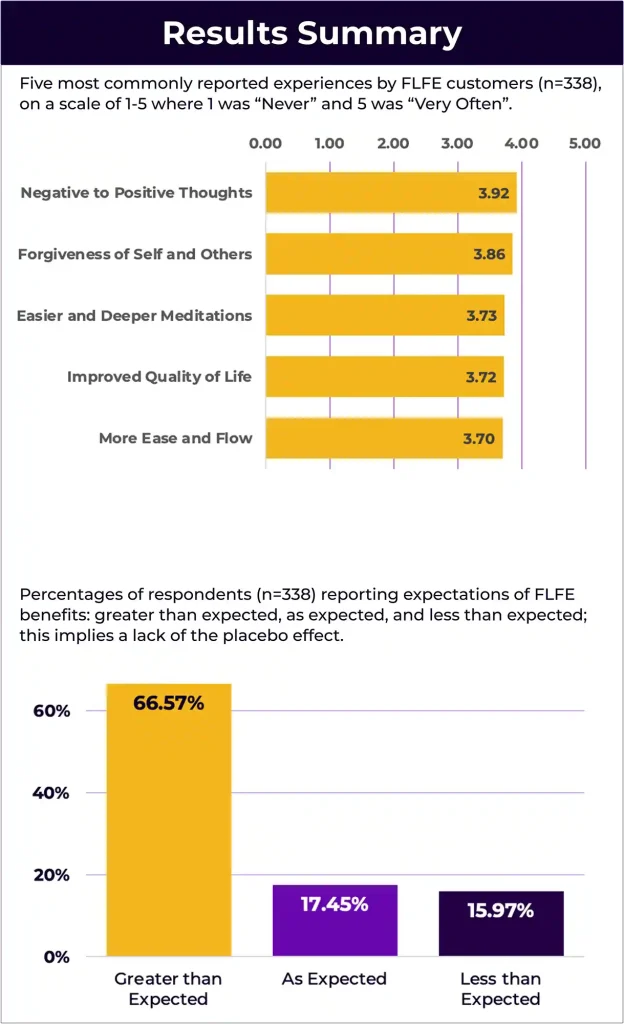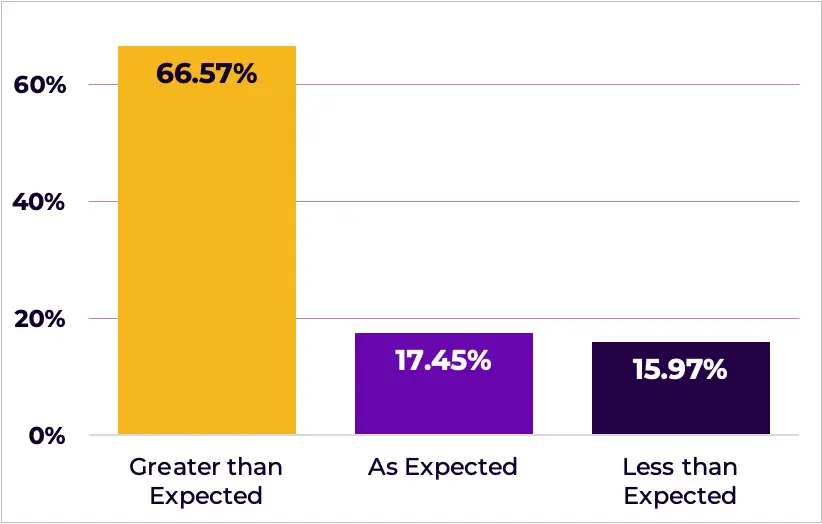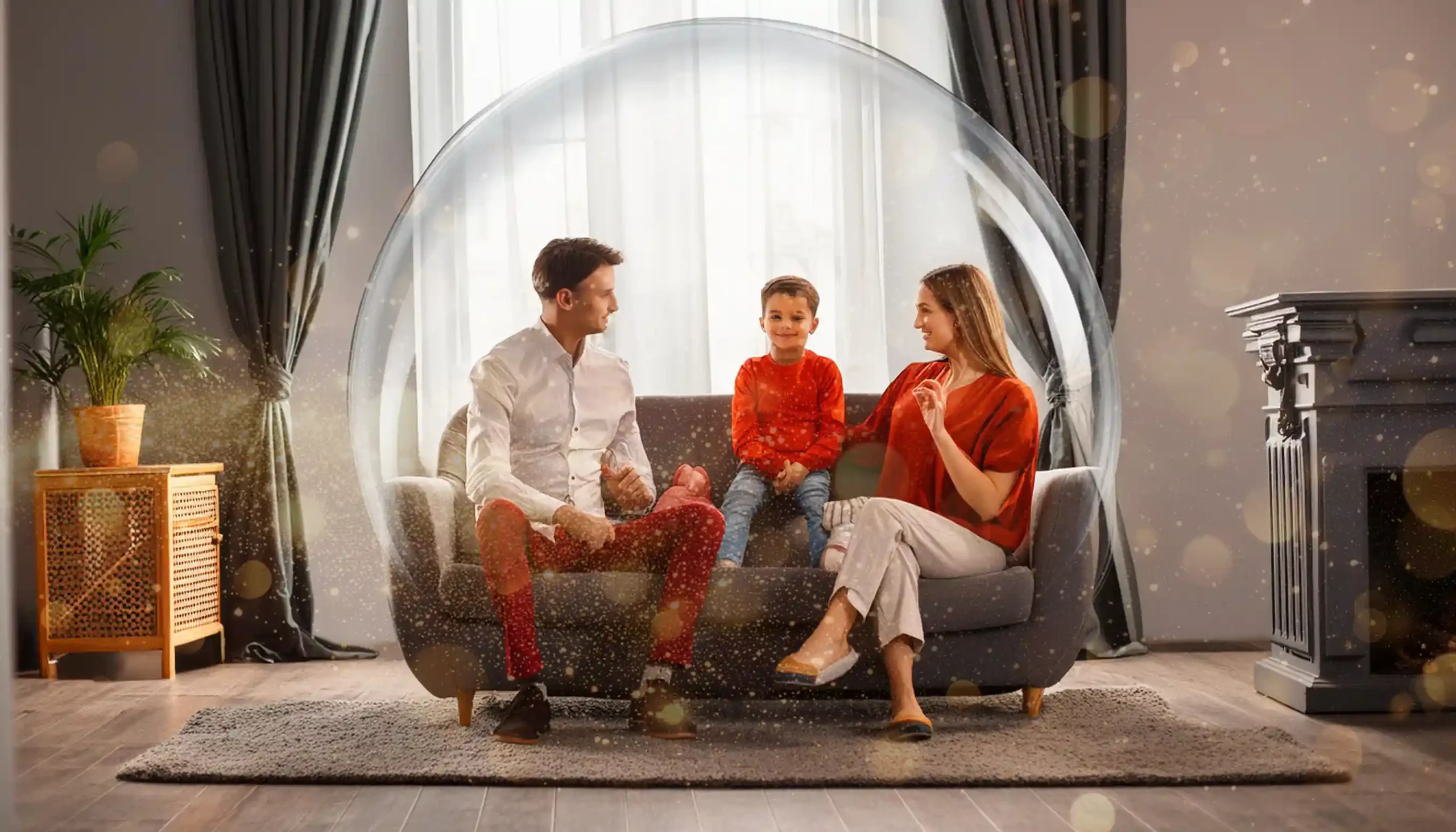Paule Bellwood, Ph.D. • Jeffrey J. Stegman, B.Sc. • Gary E. Schwartz, Ph.D.
Keywords
Customer Experience • Focused Life-Force Energy • FLFE • Effectiveness Evaluation
Abstract
Focused Life-Force Energy (FLFE) customers often spontaneously share the beneficial effects they experience from being in the FLFE environment. We analyzed four years of customer experience data to find the experiences that were most common. A survey instrument was developed to evaluate the experiences, their replicability, and the relationship between expectations and actual experiences. This was a large-scale Phase 1 exploratory large-scale research project with a representative sample of 338 FLFE customers. The majority (66.57%) of the respondents reported that their experiences of the benefits were greater than they expected implying a lack of the placebo effect. Overall, this study shows the effectiveness of FLFE for the majority of its users.
Introduction
FLFE is a Canadian company offering a consciousness-raising subscription-based service for a property or around an object. The FLFE system is designed to focus available life-force energy and to activate a high consciousness field at a specified location (i.e., legal address or geographic coordinates) or around a personal object (i.e., mobile phone). The higher-level consciousness field, in combination with other enhancements, should increase the beneficial nature of the local environment.
The FLFE service claims are extraordinary [1] in terms of mainstream science and various experiments, such as the one detailed in this paper, have been conducted to explore the effects of the purported beneficial environmental changes. FLFE’s experimental philosophy is to first explore the effects (i.e., ‘Is something happening?’) and then, when possible and practical, explore the mechanisms of action. For more information, please see the FLFE Gold Standard research statement (https://www.flfe.net/research).
Customer Experience (CX) management has been identified as one of the most important aspects of any business, only falling behind obtaining top quality employees to perform the work; yet it is also one of the biggest challenges that most companies face [2]. It includes identifying ways to create compelling CX through all stages of customer engagement as well as managing and evaluating customer expectations before, during, and after the purchasing process [2-3]. CX outcomes may be informed by exploring “intentions and a customer’s state-of-mind (e.g., customer satisfaction, a customer’s intention to become and/or stay loyal, or the likelihood of them giving a recommendation), or actual behavior (e.g., actively recommending the firm’s offerings, purchasing, and repurchasing behavior, share-of category, or word-of-mouth behavior)” [2 p.2].
In CX research, early explanations of customer actions were viewed through the lens of behavioural research that linked cognition, affect, and behaviour (CAB), suggesting “that customers are involved in a rational assessment of their past, present, and imagined future experience and use this information to determine their behavioural intentions” [2 p.4, 4]. As a result, “customers base their decision process on a sequential rational assessment of expectations versus outcomes [… and] collect sufficient information to evaluate choices by constantly assessing their expectations one by one, which, in turn, drives their intentions” [2 p.4, 5].
The service that FLFE offers is anchored in providing high quality CX throughout the entire customer journey. The FLFE company prides itself on engaging customers through genuine and informative interactions as often as needed and providing guidance when navigating their experiences with the FLFE service. Up until recently, FLFE has focused on measuring CX through simple surveys and individual accounts of CX as identified during conversations with the customers. With this study, the company has commenced a thorough and ongoing investigation of CX using robust tools to measure it while also focusing on customer expectations as an indicator of their experiences and intentions to purchase the service and/or remain a customer long term.
Based on approximately four years of accounts of CXs spontaneously provided by FLFE customers, an FLFE CX instrument – Customer Experience Survey (CES) – was developed, tested, and administered to 338 FLFE customers. Methods and results of this study are presented in the following sections. FLFE services are driven and improved by customer experiences and feedback. We developed the CES to be a reliable and sensitive measure of customer-experienced benefits of FLFE.
Methods
Approximately four years of spontaneous accounts of customer-reported benefits were entered verbatim into a Microsoft Excel spreadsheet. Word frequency account analyses were performed, and word cloud graphs were examined. A set of commonly reported benefits were selected by the FLFE Research Team and carefully crafted into questions that were easy to read and rate.
Additional questions regarding expectations, age, gender, and amount of time using FLFE were added, for a total of 20 questions. The original CES was taken by five executives and senior FLFE staff members under two conditions: (1) items rated based on their own personal experiences with FLFE, and (2) items rated again based on their predictions regarding how representative customers would answer the questions., improvements in the wording of specific benefits were made.
The modified CES was beta-tested with the FLFE staff. Additional modifications in the wording of questions were made. The updated version of the CES was announced in the FLFE Facebook Group and answered by 52 customers. After analyzing the data, it was decided to add the expectation question [2] and create 6 subcategories of benefits (Physical, Mental, Emotional, Personal/Social, Nature, and Spiritual). Final version (Appendix A) of the CES was announced on Facebook and via FLFE e-mail campaign.
Customer experiences were categorized into the following categories: physical, mental, emotional, personal/social, nature, and spiritual. The ‘physical’ category included two questions on energy levels and sleep (see items 1 and 4 in Appendix A). The ‘mental’ category included two questions on mental clarity and positive thinking (see items 2 and 5 in Appendix A). The ‘emotional’ category included three questions on joy and laughter, anxiety relief, and forgiveness (see items 3, 9, and 12 in Appendix A). The ‘personal/social’ category included five questions on communication, ease and flow, overall quality of life, reducing bad habits, and breakthroughs (see items 6, 7, 11, 14, and 6 in Appendix A). The ‘nature’ category included two questions on plant vitality and abundance of wildlife (see items 8 and 10 in Appendix A). The ‘spiritual’ category included two questions on meditation and synchronicities (see items 13 and 14 in Appendix A).
Results
338 FLFE customers participated in the study. 268 (79%) were females and 62 (18%) were males (8 did not provide gender information). Participants’ ages ranged from 25 to 91 years old (mean for the age was 58.59 years old).
The majority (57.86%) of respondents reported experiencing substantial benefits, and an additional 23.48% of respondents reported experiencing some benefits. Only 18.66% of the respondents reported minimal or no benefits (Figure 1).

Figure 1. Percentages of respondents (n=338) reporting substantial (Ratings 4 & 5), some (Rating 3), and no or minor (Ratings 1 & 2) benefits.
These effects were replicated across genders and ages. They were also replicated across people experiencing the FLFE service for 3 months or longer extending beyond 3 years. Those on the service for less than 3 months experienced the least amount of benefit, while those on the service longer had better experiences over time.
The five most commonly experienced items from the survey were (1) more ease in noticing a negative thought and moving to a more positive, optimistic thought, (2) more ease in finding forgiveness, (3) easier or deeper meditations or feeling more ‘connected’ overall, (4) positive changes in overall quality of life, and (5) more ease and flow in everyday life. Ratings for all 16 items can be seen in Figure 2.
These results cannot be explained as being a simple placebo effect. A total of 84% of respondents reported the benefits to be as they expected or greater than they expected. The majority (66.57%) of the respondents reported that their experiences of the benefits were greater than they expected, implying they were surprised by these positive observations and experiences. 17.45% reported that the FLFE benefits were as they expected, while only 15.97% indicated that the benefits were less than they expected (Figure 3).

These findings of customer expectations can also be observed for each of the 6 categories of FLFE benefits identified previously (Figure 4). Overall, participants found that the FLFE service exceeded their expectations. Those with lower initial expectations for benefits often reported experiencing the greatest benefits of FLFE.
The average CES FLFE benefits ratings for customers with lower initial expectations was 4.10 compared to 2.97 for customers who reported “As Expected” and 2.08 for customers who reported higher initial expectations; F(2,335) = 287.35, p < .0000001. This effect was replicated across all 6 subcategories of FLFE benefits.
Figure 4. Average ratings of 6 subcategories of FLFE benefits being less, equal, or greater than expected.
Figure 5 shows percentages of respondents who reported greater than expected, as expected, or less than expected compared with their rated benefits of the FLFE service.
Limitations
While this was a large Phase 1 study, we did not collect longitudinal data exploring the effects of FLFE over time.
Conclusion and Future Directions
Altogether, the findings from this large scale, Phase 1 experiment support the claim that FLFE is having positive effects for a majority of users, and that Phase 2 comparison research replicating and extending this study – including how and why FLFE works – is justified. In addition, it is possible to measure 16 commonly reported benefits from FLFE using other questionnaires / surveys employed in prior CX research.
Future research in Customer Experience will aim to replicate and extend this study by increasing the number of participants and by collecting longitudinal data showing the effect of the FLFE service and changes in customer experiences over an extended period. In addition, we will continue measuring customer expectations and reported benefits as well as interaction between the two to help inform future service improvements.
Acknowledgements
We wish to thank Lewis Humphreys, M.Sc. and Maria Colomy, B.A. for their assistance in the early phases of this research.
References
[1] Schwartz, G. E. (2021). Extraordinary claims require extraordinary evidence: The science and ethics of truth seeking and truth abuse. Waterside Productions.
[2] Klaus, P., & Palgrave (Firm). (2015). Measuring customer experience: How to develop and execute the most profitable customer experience strategies. Palgrave Macmillan. https://doi.org/10.1057/9781137375469
[3] Berry, L. L., Carbone, L. P., & Haeckel, S. H. (2002). Managing the total customer experience. MIT Sloan Management Review, 43(3), 85.
[4] Ajzen, I., & Fishbein, M. (1977). Attitude-behavior relations: A theoretical analysis and review of empirical research. Psychological Bulletin, 84(5), 888-918. https://doi.org/10.1037/0033-2909.84.5.888
[5] Grönroos, C. (1997). Value-driven relational marketing: From products to resources and competencies. Journal of Marketing Management, 13(5), 407-419. https://doi.org/10.1080/0267257X.1997.9964482










